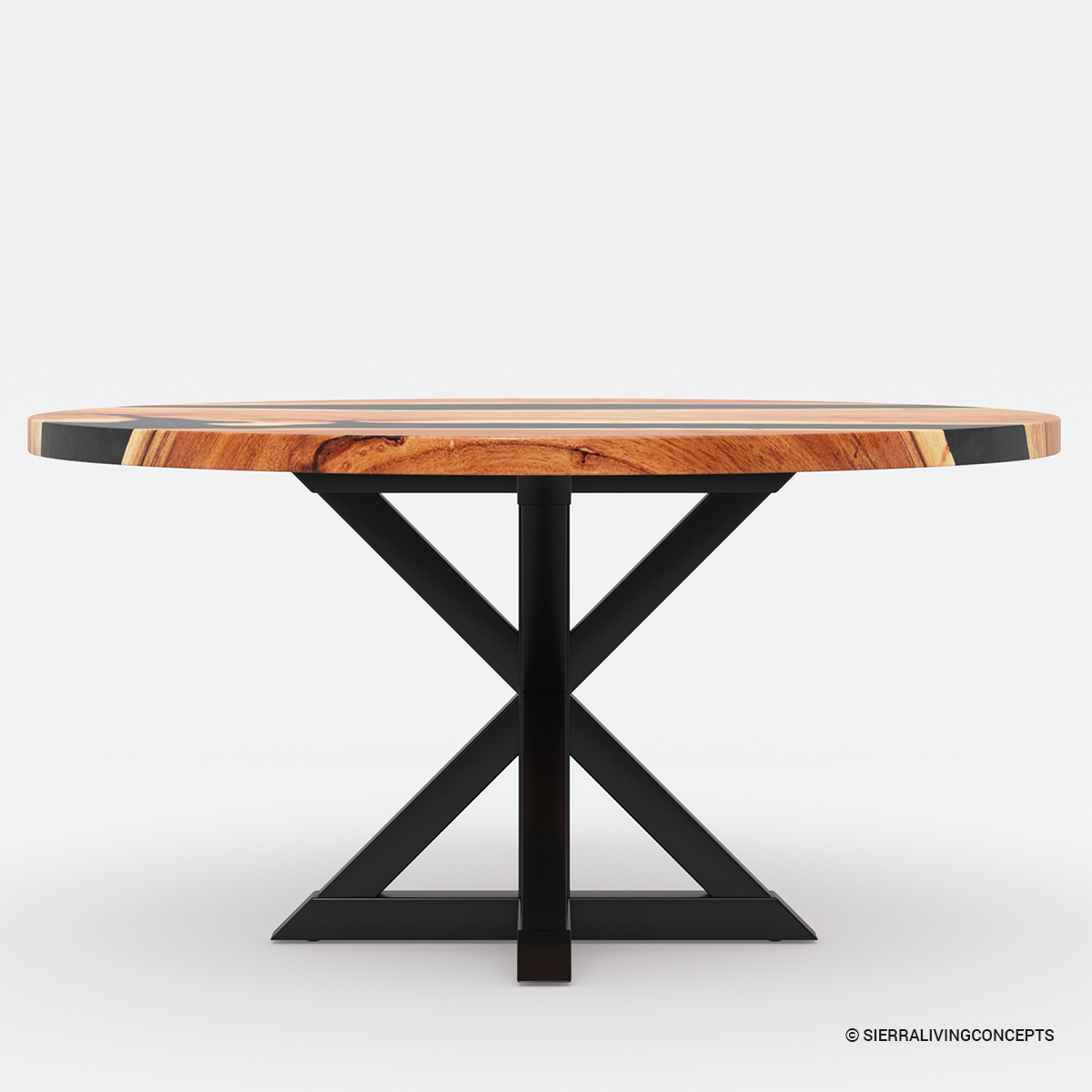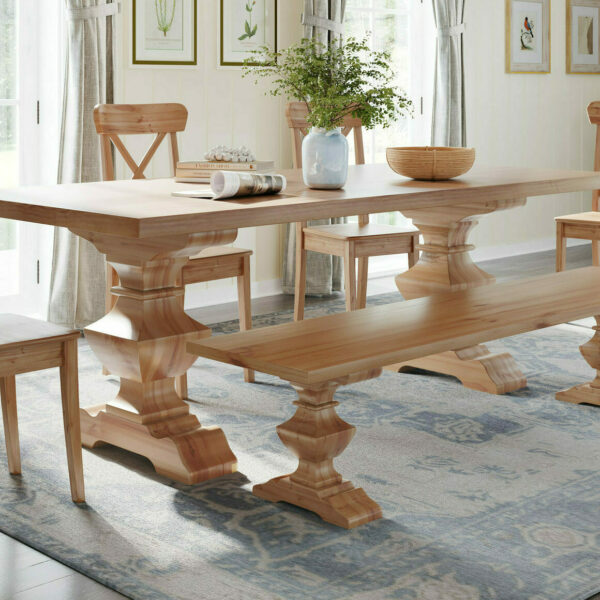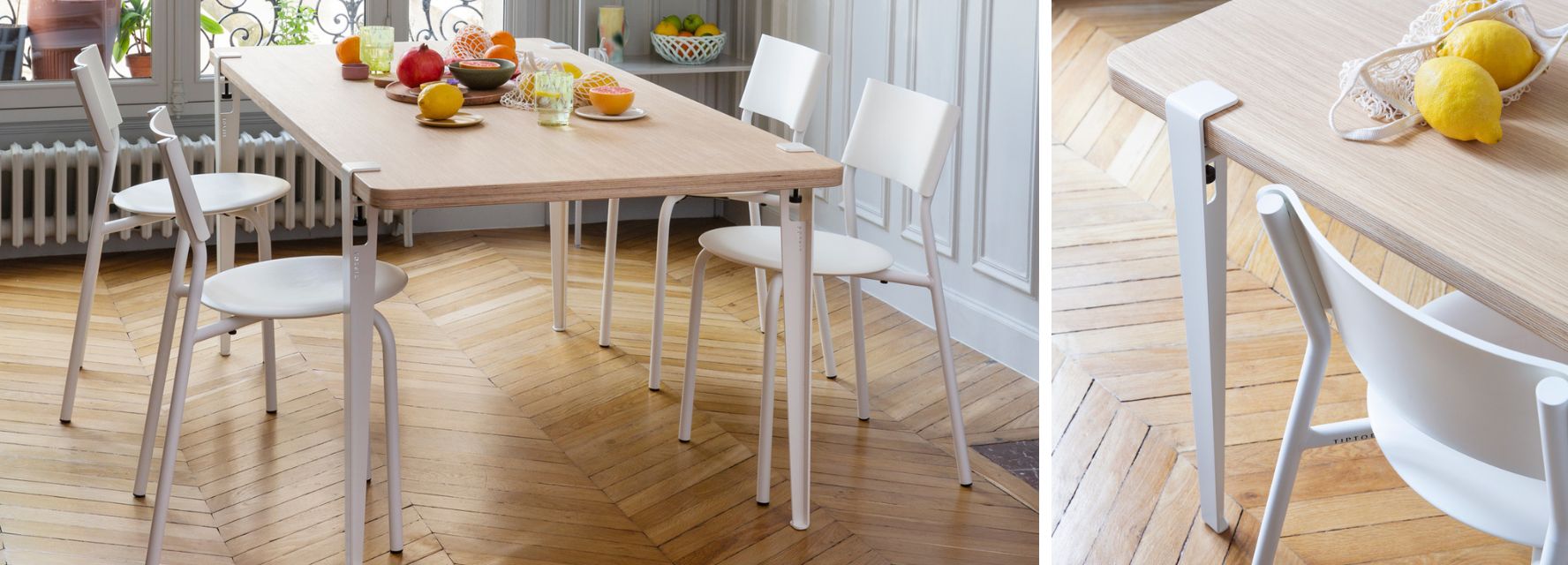Simple Steps to Replacing Old Dining Room Table Legs with New Ones
Simple Steps to Replacing Old Dining Room Table Legs with New Ones
Blog Article
How to Select the Perfect Dining-room Table Legs for Your Home Décor
Picking the optimal eating space table legs is a nuanced procedure that calls for cautious factor to consider of numerous elements, including your space restrictions, visual preferences, and practical needs. The interaction in between materials, dimensions, and styles can considerably affect the ambiance of your eating location, making it important to approach this choice methodically. As you consider the myriad options available, it comes to be clear that the best option prolongs past plain appearance; it can enhance your total eating experience. What aspects should you prioritize to ensure your choice enhances your home's distinct character?
Assess Your Dining Room
Analyzing your eating area is important for selecting the right table legs that enhance both aesthetics and capability. Begin by determining the measurements of your eating area, consisting of ceiling height, flooring area, and closeness to various other furniture. This details will certainly assist determine the ideal dimension and height of your table, which directly affects the choice of table legs.
Following, consider the design and format of your dining area. As an example, an open-concept style might gain from table legs that supply visual agility, such as slim steel or acrylic options. Alternatively, a more standard setup could ask for strong wooden legs that offer a sense of durability.
Assess the existing color combination and materials in your dining area. Harmonizing the table legs with these elements develops a natural appearance that improves the general decoration.
Eventually, a comprehensive assessment of your dining area will certainly direct you in making an informed decision, guaranteeing that your table legs not only enhance the aesthetic allure however likewise serve practical objectives.
Consider Your Design Preferences
When selecting dining-room table legs, it is vital to assess your personal style choices, as they dramatically affect the overall visual of your dining space. Your choice of table legs can either enhance or contrast with existing decoration, making it critical to straighten them with your recommended interior layout style.
If your home leans towards a modern-day aesthetic, consider sleek steel or minimalist wood legs that offer a tidy, clean appearance. For a much more conventional approach, elaborate wooden legs with detailed carvings can include a touch of style and elegance. Industrial designs gain from durable, raw materials such as redeemed timber and metal mixes, reflecting a tough beauty.
Furthermore, farmhouse and rustic designs commonly favor tough, chunky legs that stimulate a sense of warmth and convenience. On the other hand, if your decoration is eclectic, you may choose unusual shapes or a mix of materials to develop visual rate of interest.

Evaluate Material Options
The choice of material for dining room table legs plays a pivotal duty in both resilience and aesthetic appeal. Typical products consist of timber, steel, and composite options, each offering distinctive attributes that can influence the total appearance and longevity of your table.
Wood check my blog is a classic choice, understood for its heat and convenience. Woods like oak and walnut give remarkable strength and can be finished in different discolorations to match any kind of style. Nonetheless, softwoods like ache are extra vulnerable to damages and scrapes, making them much less suitable for high-traffic areas.
Steel legs, usually crafted from steel or light weight aluminum, show modernity and commercial appeal. They are immune and very long lasting to use, making them suitable for family members with youngsters or regular gatherings (dining room table legs). In addition, steel can be finished in various colors, enhancing the customization opportunities
Composite materials, such as MDF or laminate, offer price and varied designs. While typically much less long lasting than solid timber or steel, they can still offer a stylish look and are typically easy to keep.
Inevitably, the product you select should straighten with your lifestyle, visual preferences, and the degree of use your eating table will experience.
Determine Height and Size
Picking the proper height and size for your dining-room table is important for both functionality and convenience. The basic elevation for dining tables typically varies from 28 to 30 inches, allowing adequate legroom for most people when seated. It is important to take into consideration the measurements of your dining area and the kinds of chairs you plan to utilize.

Moreover, take into consideration the percentages of your dining room. A bigger table in a sizable location can develop a grand ambiance, while a smaller table works well in more intimate setups. Inevitably, the appropriate elevation and dimension will certainly integrate with your total style and enhance the dining experience for you and your visitors.
Explore Customization Possibilities

In addition, the layout of the legs can be tailored to fit various designs, such as rustic, contemporary, or commercial. Conical legs can evoke a mid-century modern feeling, while beefy, block-style legs might resonate with typical or farmhouse style.
Home owners can also explore color finishes, from natural timber stains to repaint, enabling them to match or comparison with the tabletop and surrounding decor.
Furthermore, leg height can be changed to accommodate details seating arrangements or personal choices, enhancing both comfort and view it capability.
Finally, special decorations, such as carvings or ornamental brackets, can further customize the table legs, making the eating experience not just a meal however a declaration piece in the home. By thinking about these modification alternatives, homeowners can develop a dining area table that really mirrors their individuality.
Verdict
Choosing the perfect dining-room table legs calls for cautious factor to consider of various aspects, including the measurements of the dining area, design preferences, product durability, and desired elevation. Customization choices further improve the capacity to accomplish a cohesive visual that complements the overall style. By systematically reviewing these aspects, home owners can ensure that the chosen table legs not just accomplish functional demands however also contribute positively to the eating experience and ambiance of the home.
Selecting the suitable eating room table legs is a nuanced process that requires mindful consideration of numerous elements, including your area restrictions, visual preferences, and sensible requirements.Evaluating your dining space is vital for selecting the right table legs that complement both aesthetic appeals and capability.When identifying dimension, determine the location where the table will be positioned to guarantee it fits pleasantly, permitting for at the very least 36 inches of clearance around the table for very easy movement. A bigger table in a large area can develop a grand ambiance, while a smaller sized table functions well in more intimate setups.Choosing the optimal eating room table legs requires careful consideration of numerous factors, consisting of the measurements of the dining space, design preferences, product durability, and preferred height.
Report this page